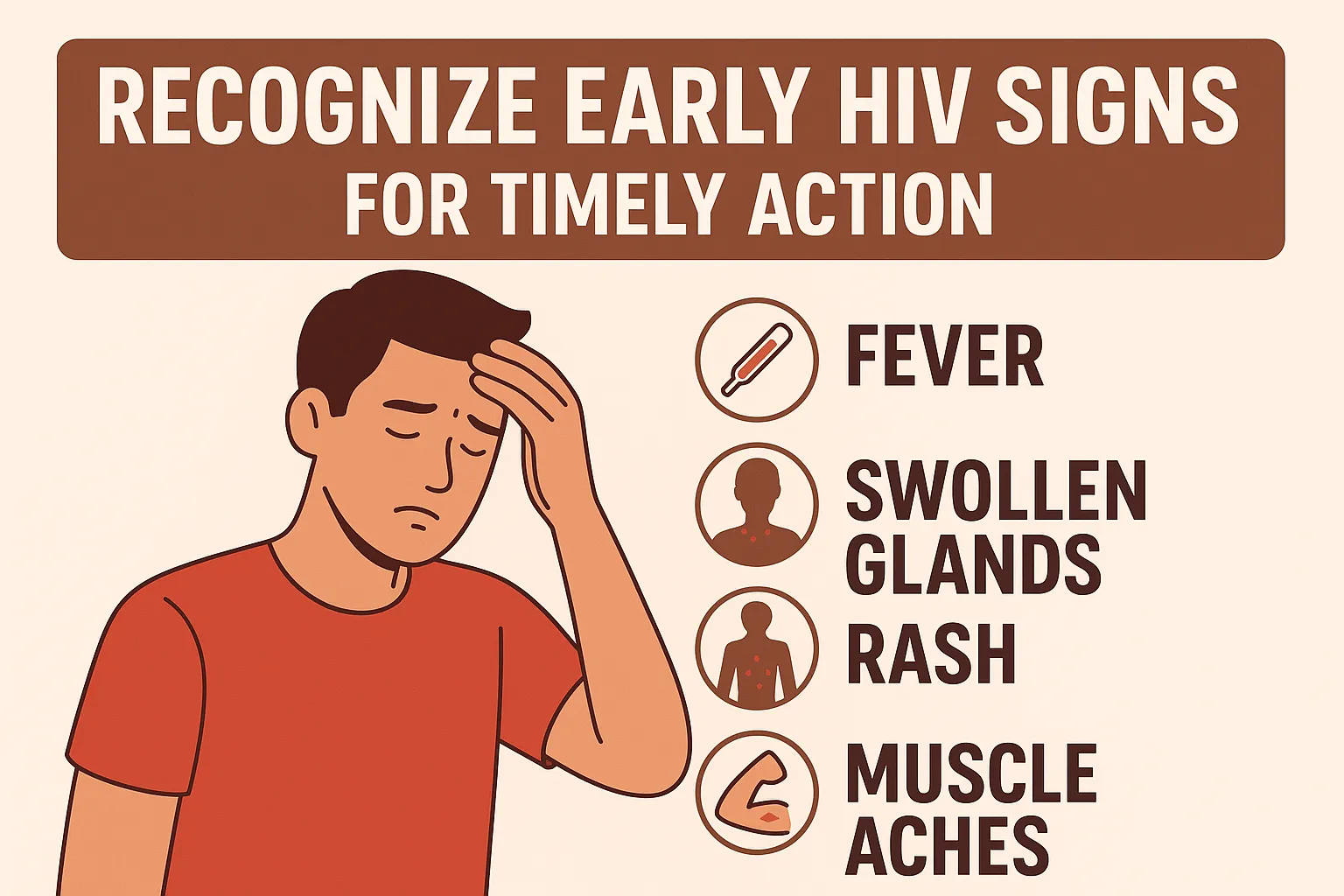Recognize Early HIV Signs for Timely Action
Recognizing the Subtle Early Signs of HIV
The first signs and symptoms of HIV often manifest subtly within two to six weeks post-infection, resembling common flu-like conditions. These early indicators can include fever, chills, rash, headache, and swollen lymph nodes as part of acute retroviral syndrome (ARS). The immune system’s response to HIV’s rapid replication causes these symptoms, leading to the body’s general feeling of malaise. Two-thirds of individuals with acute-stage HIV may not initially recognize these symptoms as HIV-related due to their commonality with other ailments and their fleeting nature.
Flu-Like Symptoms and the Importance of Early Testing
Identified mostly by flu-like symptoms such as fever, sore throat, and muscle aches, the acute stage of HIV signals the immune system’s fight against the virus. These symptoms generally appear 2 to 4 weeks after exposure to HIV and may last only a few weeks as acute retroviral syndrome emerges. Early detection through regular HIV testing is crucial, especially for those with potential exposure through unprotected sex or shared needles. Diagnosing early allows for antiretroviral treatments that can contain the virus, reducing the risk of progressing to stage 3 HIV, known as AIDS and significantly improving quality of life.
The Asymptomatic Phase and Continuous Virus Activity
After the initial flu-like phase, HIV often enters a chronic, asymptomatic stage that can last for many years. While symptoms may not be apparent during this time, the virus continues to replicate and gradually weaken the immune system leaving it vulnerable to opportunistic infections. Regular testing remains important because, despite the absence of overt symptoms, untreated HIV leads to irreversible immune system damage. Truly, managing the disease proactively helps prevent the immune system from being overwhelmed.
Progression to AIDS and Identifying Related Symptoms
Without effective treatment, HIV can progress to AIDS, characterized by severe immunodeficiency and susceptibility to infections and cancer. Symptoms of AIDS include significant weight loss, chronic diarrhea, night sweats, swollen lymph nodes, skin rashes, memory problems, and extreme fatigue as the condition worsens. Addressing early HIV signs and starting treatment significantly reduces the risk of reaching this advanced stage by maintaining health over many years.
Antiretroviral Treatment and Its Impact
Antiretroviral therapy (ART) is pivotal in managing HIV infection. By reducing the viral load to undetectable levels, ART not only prevents the advancement to AIDS but also stops transmission to HIV-negative partners and supports long-term health. This treatment, coupled with early diagnosis, offers patients the best chance to live a healthy, productive life with minimal complications.
Preventative Measures and Resources
Preventing HIV transmission involves several strategies, including consistent condom use and avoiding needle sharing. Post-exposure prophylaxis (PEP) can also be effective if administered within 72 hours after potential exposure. Multiple HIV testing options ensure timely diagnosis and initiation of treatment when necessary with clinic tests and home kits available. Furthermore, support services play a crucial role, providing resources and assistance to individuals navigating their diagnosis.
Why You Should Learn More About Early HIV Signs Today
Understanding the early signs of HIV is vital in taking proactive steps towards managing health and preventing the advancement to AIDS. Recognizing flu-like symptoms early and seeking testing can lead to timely interventions that preserve the immune system. As more information becomes available, being informed supports better health outcomes and helps to reduce HIV transmission rates. Importantly, awareness of symptoms and availability of resources empowers individuals to take control of their health.












